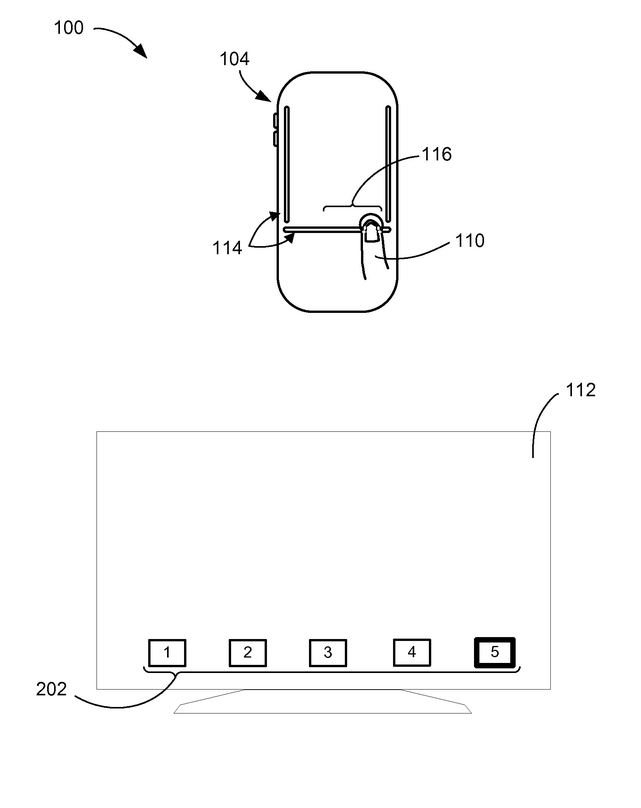
In 2012 Samsung introduce to market a Smart TV Remote. Swiping finger across large touchpad area of the remote caused TV Smart interface selection to move up/left/right or down to the next interface element. Unfortunately, the resulting production remote turned out to be pretty unresponsive, resulting in a poor market reception.
To improve it we proposed a concept of clickable touchpad surrounded by ridges. New ridge interactions and algorithms for translating finger movement into directional navigation commands were developed. Our design won internal competition and went into production for 2013 SmartTV models.

Ridges provide physical affordance, indicating edges of the touchpad, they can serve as one or several buttons, one can swipe across them or they can be used as a scroll controllers.
September 23, 2013. CNET review of Samsung TV: "The company totally redesigned the touch pad this year, and it's a massive improvement. Despite a few flaws and the need for a learning curve, in many ways it's the best remote control included with any TV I've ever used".
The remote control design was intended to keep viewer attention on TV screen, therefore it was equipped with significantly reduced number of buttons compared to traditional remote. One notable omission was a number button section. Customers had to navigate on-screen number pad to tune to a desired channel by number. To address a discontent caused by more complicated channel navigation I proposed to use the remote touchpad for stroke based channel number handwriting; implemented a prototype; collected data from people of different background. After HQ was convinced, prototype javascript code was ported by us to production quality C++ and was put on production 2013 TV sets.

Using remote control users can navigate a Smart TV user interface by moving a finger across the touch pad. However, due to the latency in visual feedback, there is a disconnection between the finger movement on the touchpad and the visual perception in the TV UI, which often causes overshooting.
In a related research project we investigated how haptic feedback affects the user experience of the touchpad-based TV remote. Two haptic prototypes were built on the smartphone and Samsung 2013 TV remote respectively. We conducted two user studies with those prototypes to evaluate how the user preference and the user performance been affected. The results show that there is overwhelming support of haptic feedback in terms of subjective user preference, though we didn't find significant difference in performance between with and without haptic feedback conditions.

Sample task: Participants used the touchpad remote to move the highlight (blue) to the target cell (green) as quickly and accurately as possible.
Publications
- Anton Treskunov, Mike Darnell and Rongrong Wang (2015) Active Haptic Feedback for Touch Enabled TV Remote Proceedings of 17th International Conference on Multimodal Interaction (ICMI 2015) Seattle, Washington, USA ACM bibtex pdf
Patents
- Hu, Y. and Treskunov, A., inventors; Samsung Electronics, Inc, assignee. 2016, April 26. Control system with ridge interface and method of operation thereof United States Patent No. 9,323,334
- Treskunov, A. and Hu, Y. and Choi, S., inventors; Samsung Electronics, Inc, assignee. 2018, November 6. Visual feedback for user interface navigation on television system United States Patent No. 10,120,540
- Treskunov, A. and Hu, Y., inventors; Samsung Electronics, Inc, assignee. 2019, January 8. Display system with concurrent multi-mode control mechanism and method of operation thereof United States Patent No. 10,175,874